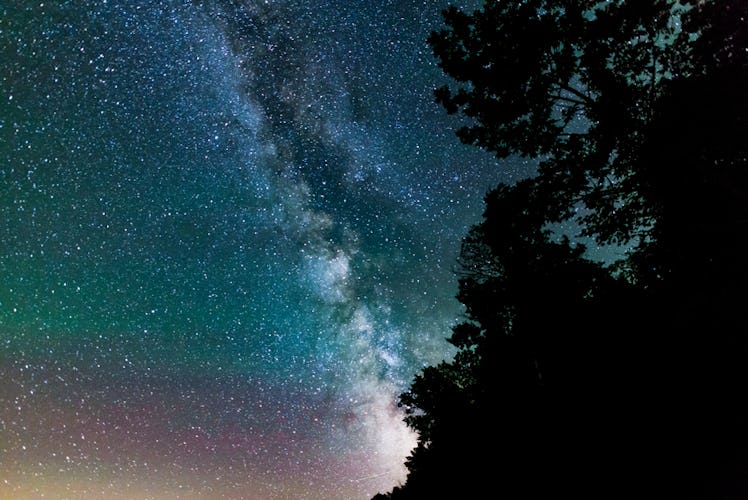
The Eta Aquariids Meteor Shower Is Coming & Here's What You Need To Know
I don't know about you, but the fact that my life is just a tiny, inconsequential speck in the grand scheme of our vast and infinite universe is incredibly comforting to me. Human existence is just so ridiculously small. All my thoughts, concerns, and worries are merely transient whispers in the long history of time. No matter what might become of us, planet Earth will keep on turning. Since we all were lucky enough to be plucked out of thin air and brought to life, why not enjoy all the beauty that this world has to offer? I can't imagine a better way to do that than to spend an evening watching the 2018 Eta Aquariids meteor shower.
This annual meteor shower shoots laser beams of galactic light across our night sky and remains a source of enchantment you can always depend on. These meteors are remnants from Halley's Comet, which in 1986, painted our solar system with a bright blaze of blue fire. Like dust still lingering from such an unbelievable phenomenon, the Eta Aquariids allow us to experience the magic over and over again, for generations to come. Often beginning around late April and continuing until late May, there's aways plenty of time to catch a few meteors blasting through the atmosphere. Until Halley's Comet makes a complete journey around the sun and passes through our sky again in 2061, the Eta Aquariids are the next best thing.
While the Eta Aquariids meteor shower lasts nearly a month, there are better times to see it than others. Bill Cooke, leader of NASA's Meteoroid Environment Office, claims that the most powerful time to watch the display this year will be in the early hours of May 7, according to Space.com. It is during this time that observers will be able to catch 15 to 20 meteors per hour, unless their presence is overpowered by the brightness of the waning gibbous moon scheduled to appear that night. If you can't set aside time that morning, not to worry. Robert Lunsford, writer for the International Meteor Organization, specified that the shower will plateau in the week surrounding May 6, so there's still plenty of opportunities to bask in the starry glow.
The best time to catch a few "shooting stars" is in the early hours of dawn, just before morning twilight, according to EarthSky. It is advised that you set aside at least one hour to watch the phenomenon; the meteors arrive in bursts and there could be pauses in activity.
Since light pollution from the hustle and bustle of a populated city can definitely obscure the faint beauty of a meteor shower, you should attempt to watch the sky in a rural area, somewhere dark and unimpeded by the framework of society. It's also a great idea to plan your stargazing adventure on an evening that's sure to be full of clear skies, for stormy weather will put a damper on the whole event.
According to Space.com, those who live near the equator will have the best view of the Eta Aquariids. However, if you live in a more northern area, you'll still be able to see them as long as you watch the meteor shower from a spot that has a clear view of the southern horizon, where the phenomenon will be most prominent.
If you don't feel like pondering the big picture and finding comfort in the meaninglessness of your problems in the midst of such an unfathomably large universe, you should still find time to make a wish on a shooting star. As Jiminy Cricket once famously said, "When you wish upon a star/Makes no difference who you are." While meteor showers are not technically "shooting stars," that doesn't take away from the fact that the Eta Aquariids are the perfect opportunity to make your heart's desires known. Who knows what could happen?